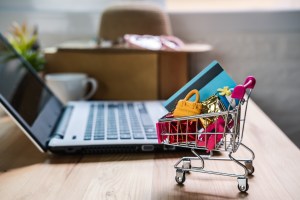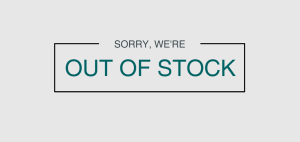On average, 70% of visitors to your e-commerce website abandon their shopping cart. To address this issue in the development of your online shop, let's discover in this article how optimising your logistic process can improve your conversion rate and the shopping experience through 4 tips.
E-commerce conversion rate
The conversion rate measures the effectiveness of the last stage of the sales tunnel. It represents the proportion of visitors who have placed an order out of the total number of visitors. In France, the conversion rate is on average around 1.72% on mobile and 3.52% on desktop.
The conversion rate in e-commerce is, for a majority of e-merchants, a key data that focuses attention and symbolises the performance or not of the website.
Logistics, the often forgotten conversion lever
Logistics plays a role that is often forgotten in improving the conversion rate of an online shop. Forgotten because its impact is less direct. However, a good logistics process is a key element of a good post-purchase experience. And a good post-shopping experience is a good way to keep your customers coming back.
Let's discover 4 tips to optimise your logistics process.

1. Propose several delivery methods and options
55% of e-commerce visitors abandon their order because of high shipping costs. There is no doubt that the cost of delivery has an impact on your conversion rate. If it is a way to increase your margins, the strong competition online means that you need to offer the most optimal logistical solution to entice and convert your customers.
Depending on your target markets, consumers will have different expectations of delivery. You need to keep in mind that what matters most is: speed, flexibility and choice.
We advise you to put in place the following 4 elements:
- Free delivery with or without minimum order depending on your margins
- Express delivery
- The choice of delivery location: home, relay point, etc.
- Eco-responsible "green" delivery to limit and/or offset your impact on the environment
Depending on your capabilities and partners, it is likely that implementing these elements will improve the customer experience and your e-commerce conversion rate. However, there is a cost, so turning to an expert e-commerce logistics and 3PL partner can help.
2. Manage your stocks efficiently

Nothing is more frustrating for a buyer than to find the product they like "out of stock". Inventory management in e-commerce can be very complex for e-tailers and online retailers depending on the logistics process in place.
First of all, you must display the available stock in real time on your online shop. Without going into detail, simply display the products "in stock" and the products that will soon be out of stock. This also allows you to create a sense of urgency. You can also remove products from your shop that are no longer in stock or offer your customers the option of being informed by e-mail when they are restocked.
The second step is to ensure that the data in your e-commerce platform and/or ERP and your logistics solution communicate correctly. There is nothing worse than an information asymmetry and selling a product that you do not have in stock at the moment. If you choose to outsource your e-commerce logistics, these aspects must be taken into account in the decision process of the partner.
3. Customised packaging and a unique unboxing experience
In recent years, unboxing has evolved. From the simple joy of opening a package to a powerful e-commerce marketing tool, it is now a true experience.
For e-commerce companies, packaging is the first touchpoint with the customer. While packaging was originally born out of the need to protect products during transport, many e-commerce professionals overlook the commercial potential behind it. An unboxing experience is an excellent opportunity to deliver the product safely and create a memorable moment.
Many elements need to come together to create a well-designed packaging and a successful unboxing experience: packaging, fabric, paper, padding, cushioning, stickers, promotional code, cards, flyers, tape or even gifts. There are many customisation options to make the experience even better.

Also consider the materials used. Whether it's the textures or the use of recyclable or reusable materials, these elements promote customer satisfaction and therefore loyalty.
The unboxing experience alone can be the competitive advantage your business needs to not only generate repeat sales and loyalty, but also to win new customers.
4. A good returns policy to build loyalty
76% of e-buyers read the return policy before purchase worldwide (Metapack study). A few years ago, the issue of e-commerce returns was either a challenge or a marketing element. One example is the "Try first, pay later" campaign by Zalando, one of the forerunners in the liberalisation and standardisation of e-commerce returns.
Today, an online retailer needs to have a good reverse logistics process to ensure an optimal customer experience.
What is a good returns management policy?
- Clear and precise conditions
- A seamless experience for your customers
- A loyalty and re-purchase tool
First of all, your return conditions must be clear and precise. In particular, you must specify: the duration, the time limits, the prices and the conditions. Example: "free return within 15 days". These conditions must be visible on important pages of your website: home page, product pages, GTC, page dedicated to the returns policy.
Secondly, the returns process should be smooth and simple for the customer. Here you should facilitate the customer experience by printing and including the return label in the package, or giving the option to print it on demand. The aim is to make the process simple. To take it a step further, you can offer an online returns management platform for complete and transparent tracking of all stages of the process: from printing the label to refunding.
Finally, a good returns policy is a way to build customer loyalty. A good returns experience will improve the overall post-purchase experience. The cost of implementing a free returns policy, for example, can then be offset by acquiring new customers, retaining them and increasing their average shopping basket.

E-commerce logistics is a key success factor for improving your customer experience and growing your online shop. However, the more you try to improve your process, the more you will be confronted with high costs and technical obstacles.
With the expertise of an e-logistics partner like byrd, you can be sure to offer your customers the best post-purchase experience and to benefit from optimal order processing.
About the author :
Article written by Augustin Martinez, Content Manager France at byrd. His challenge: to help e-retailers grow and revolutionise e-commerce logistics.






